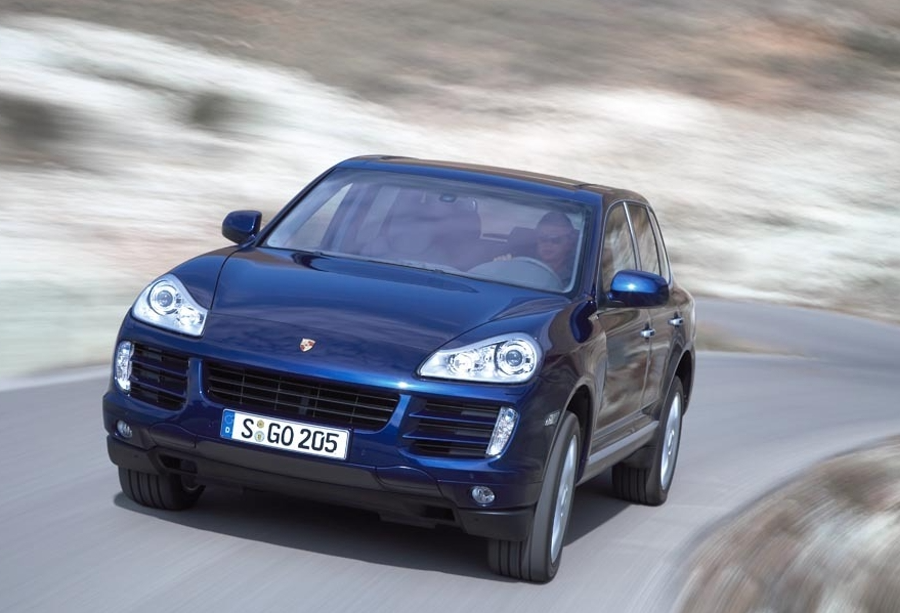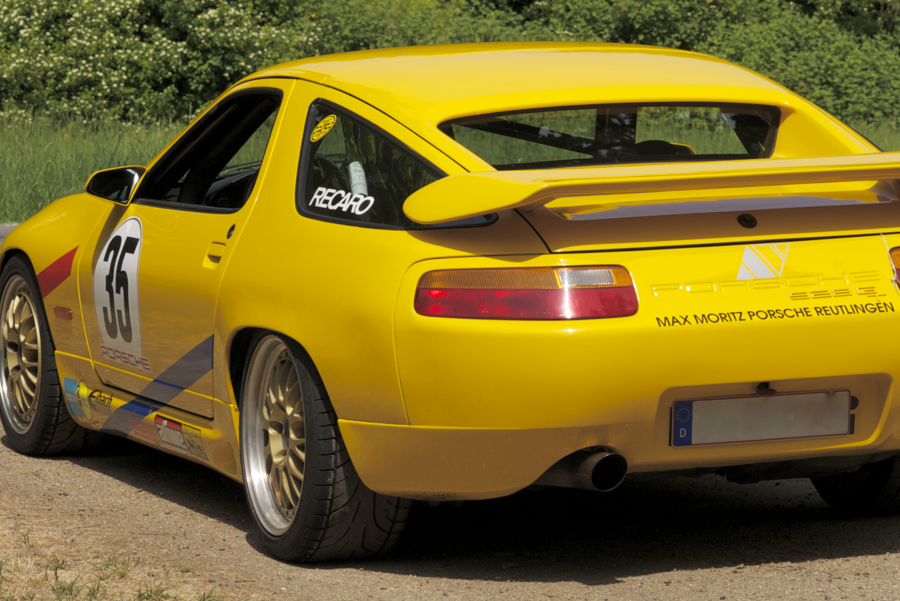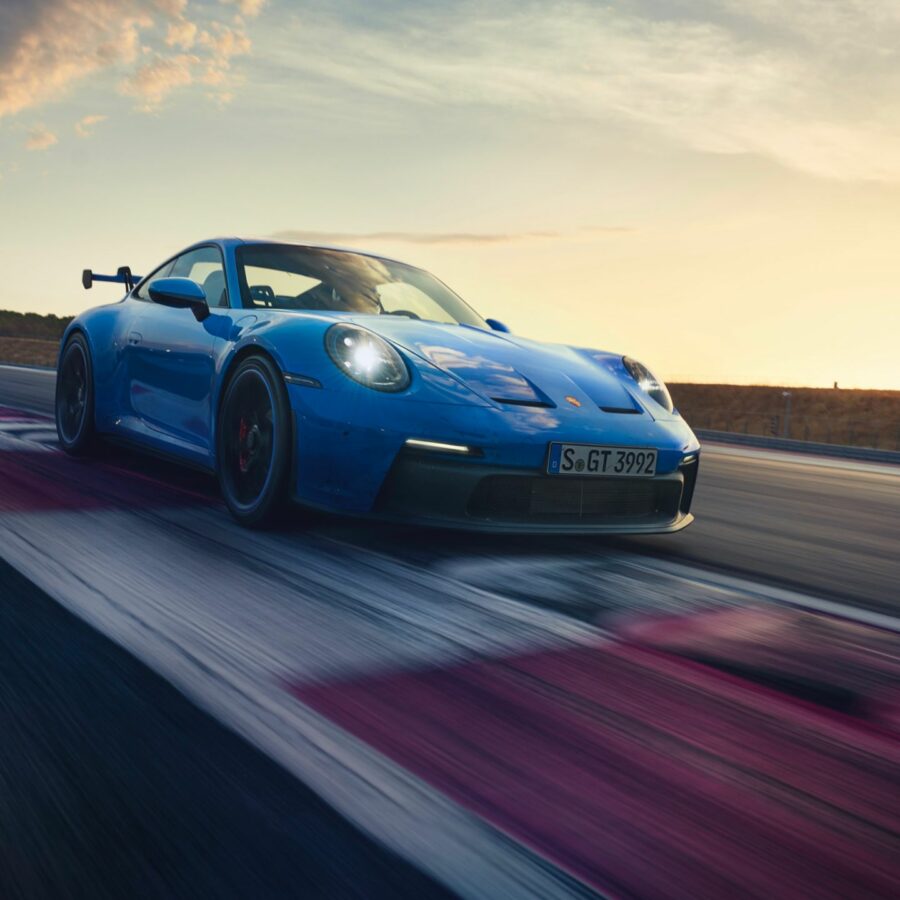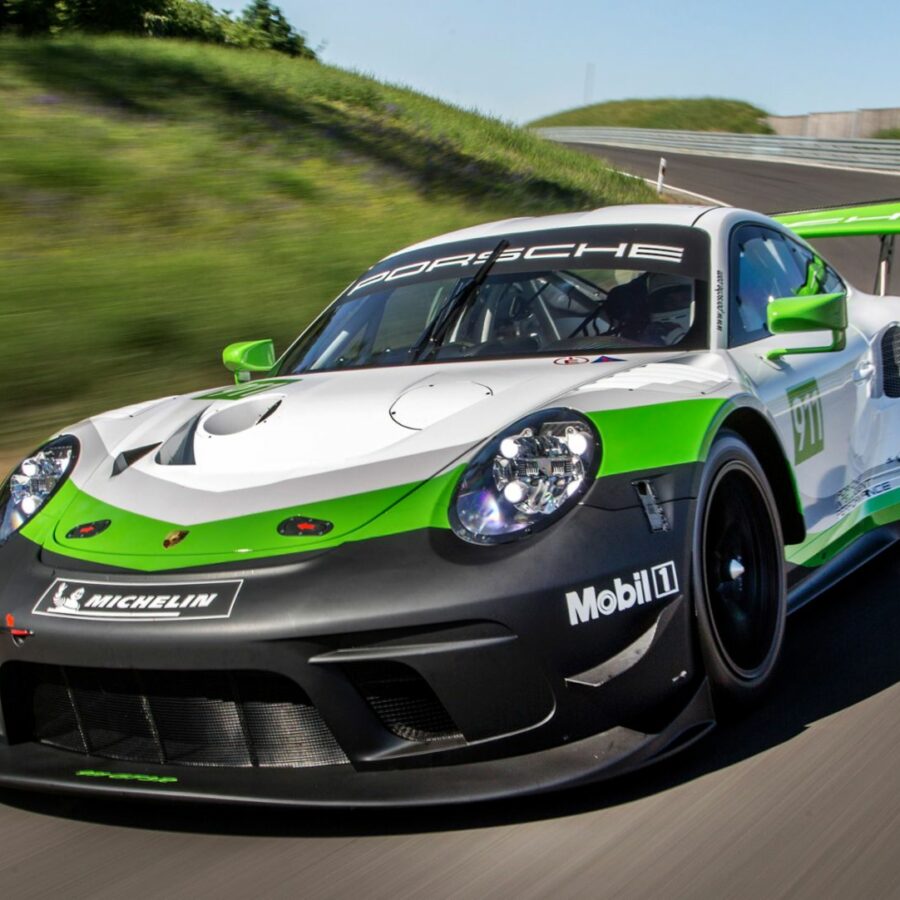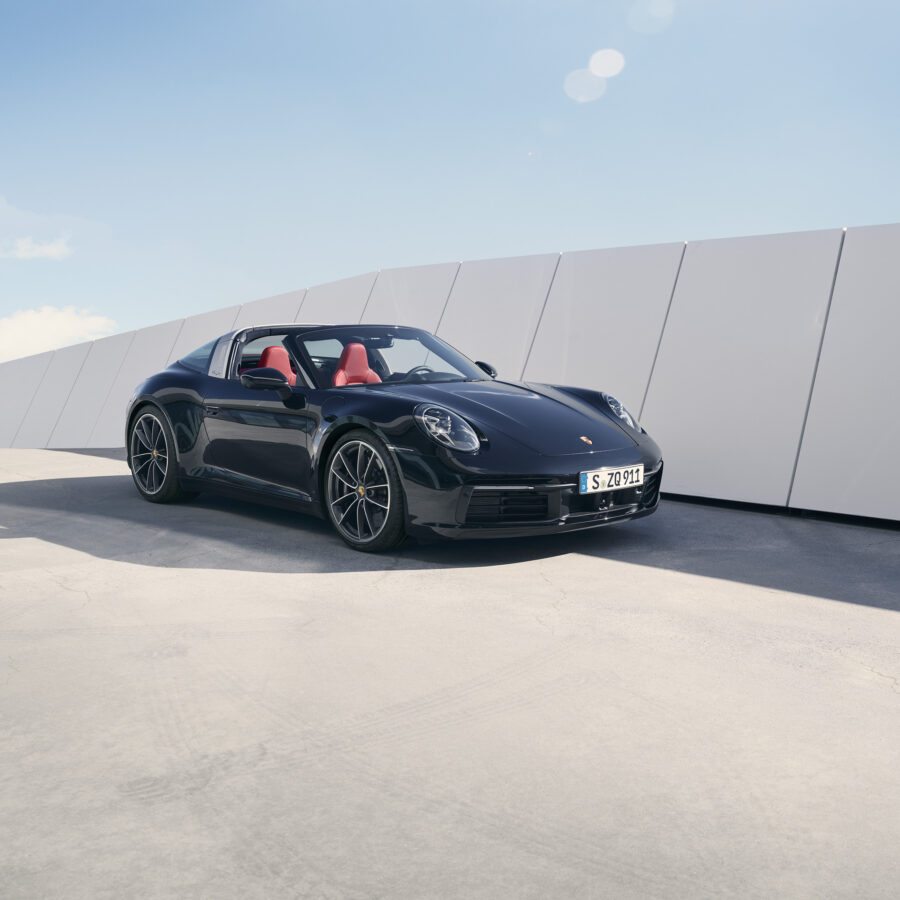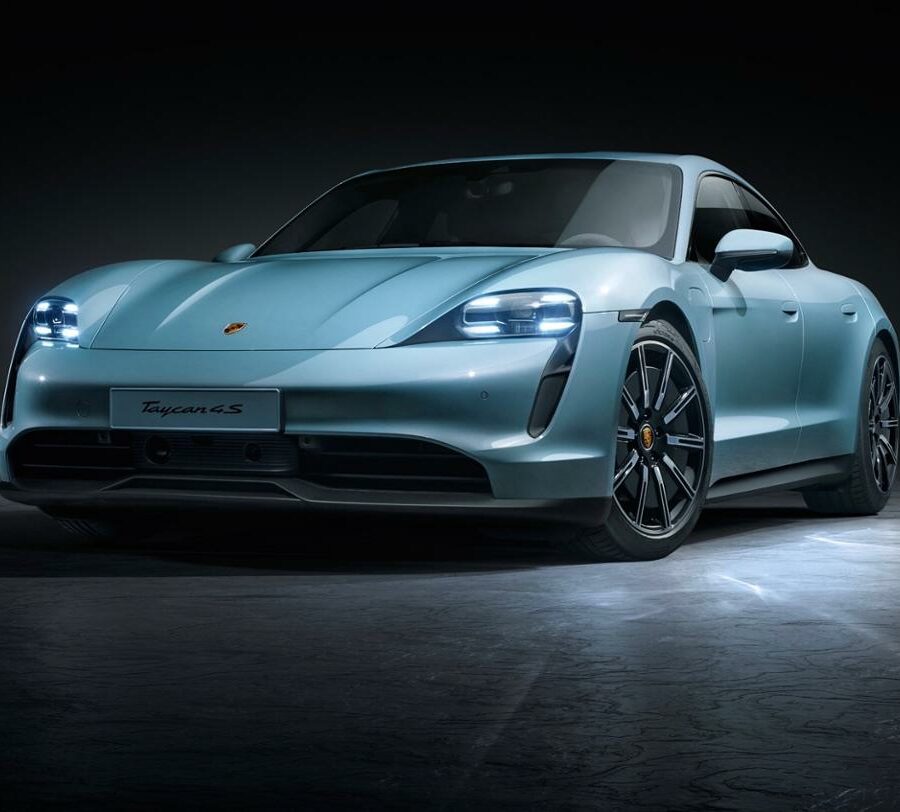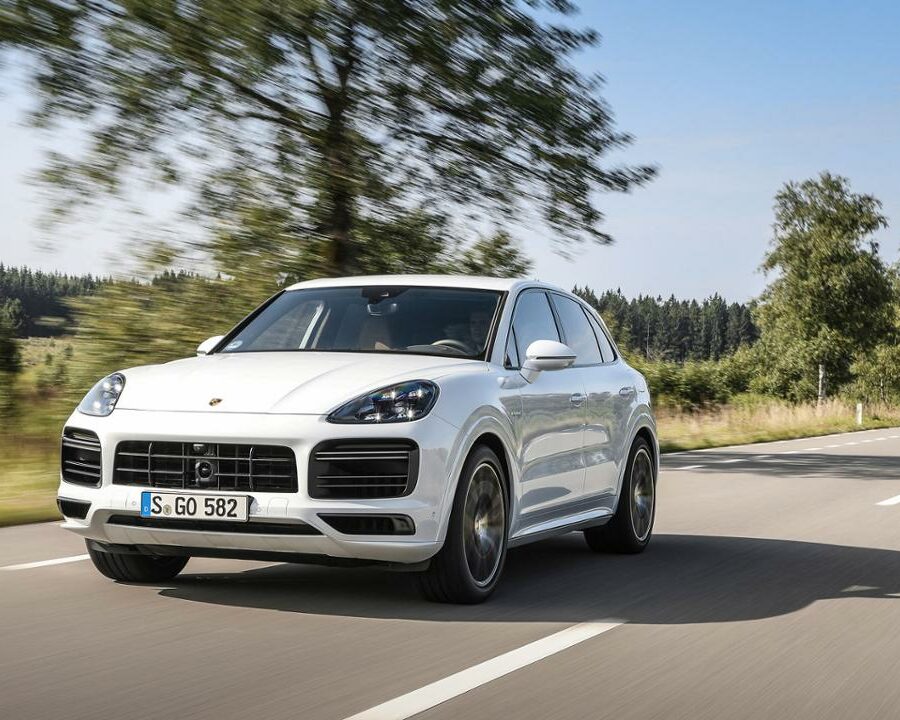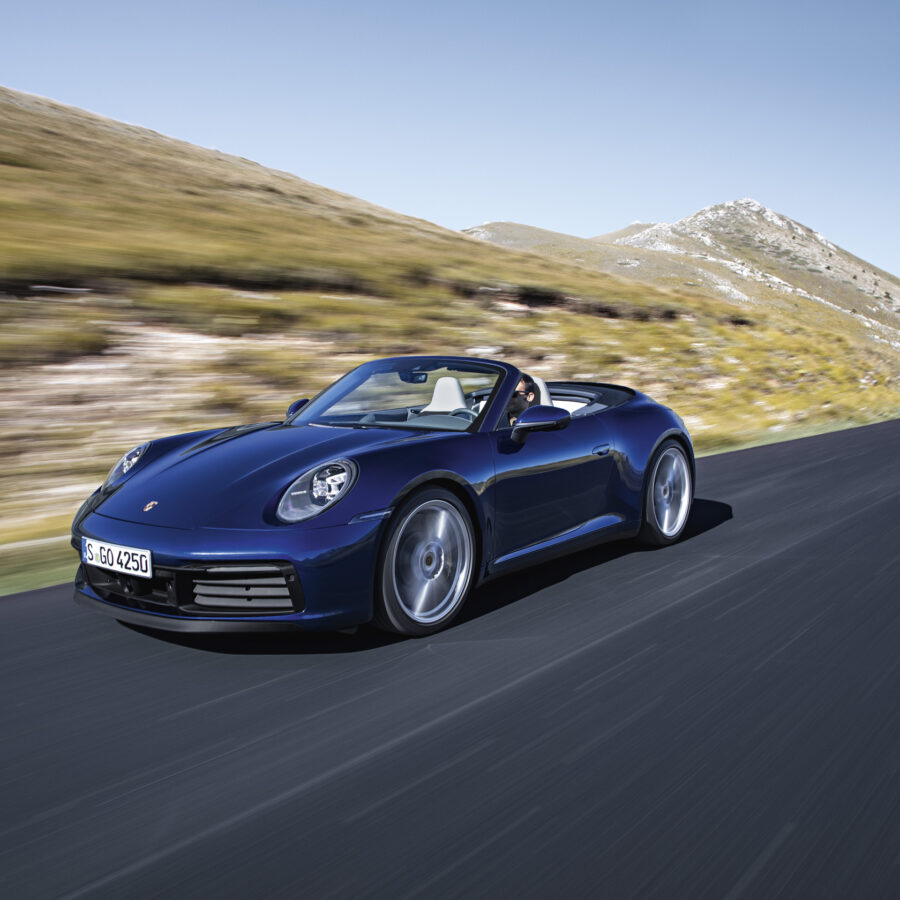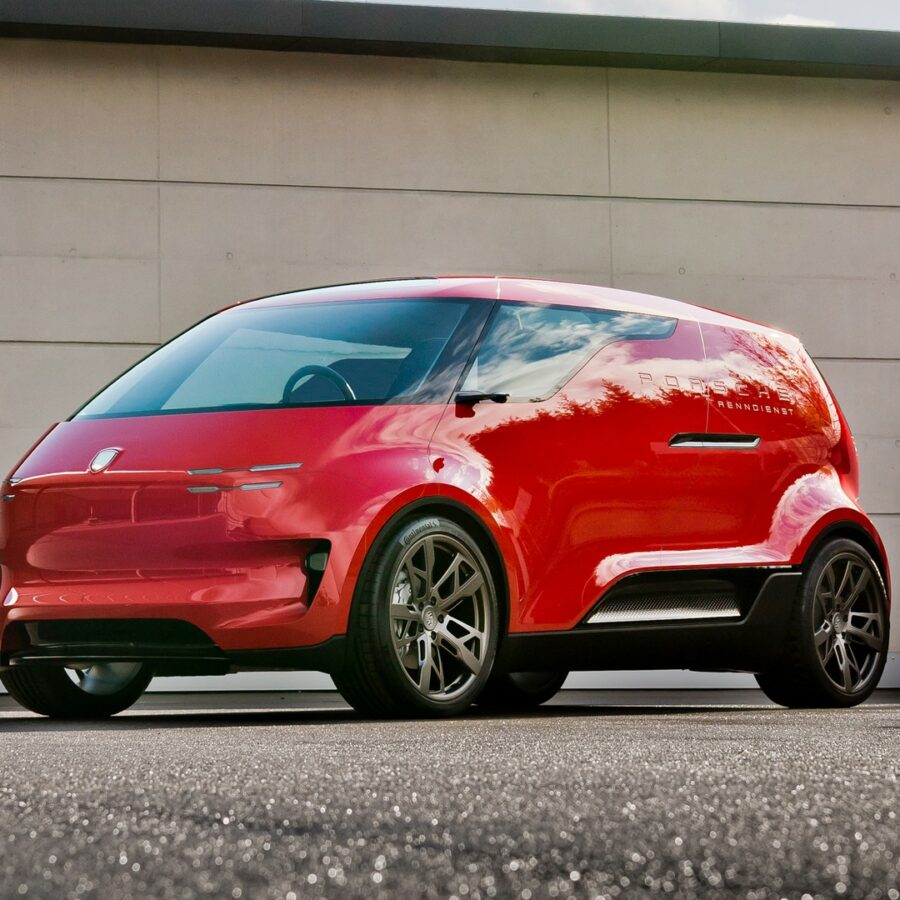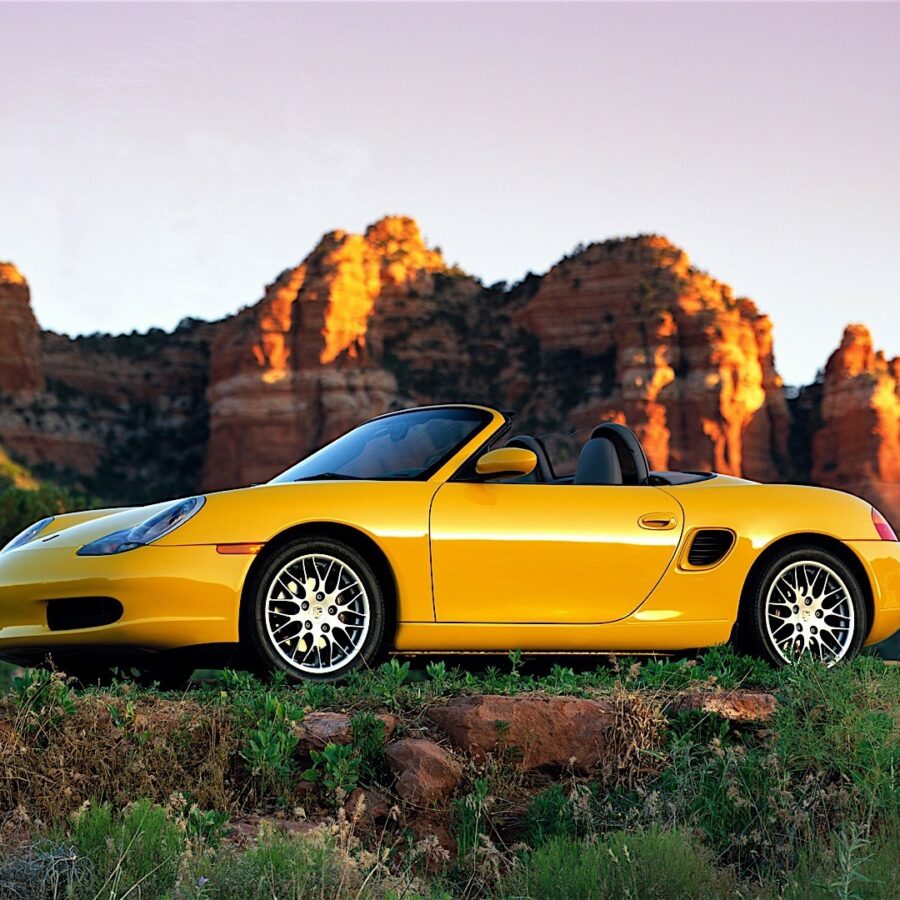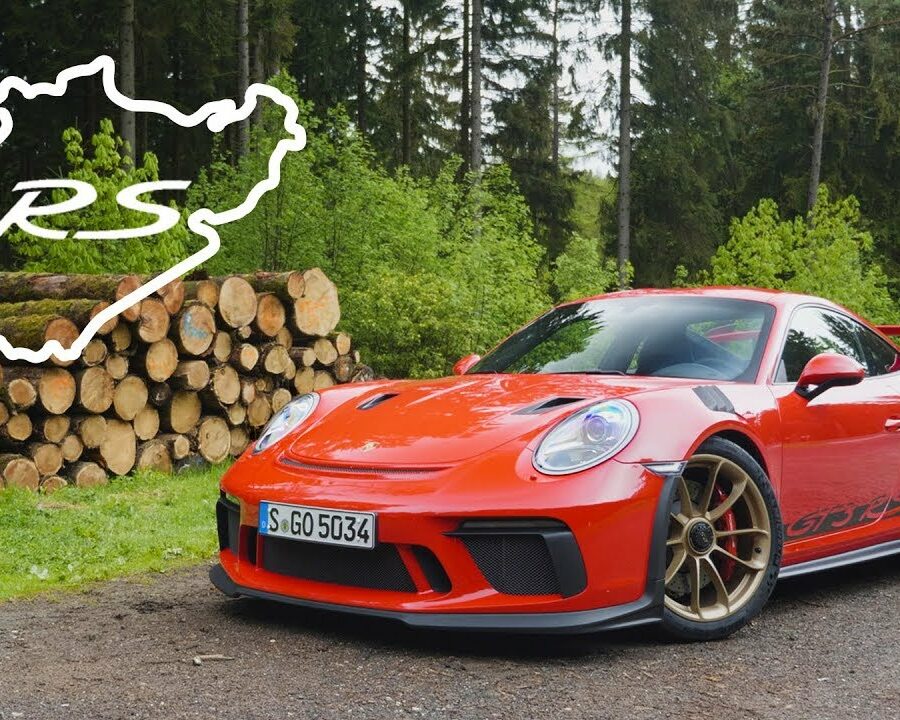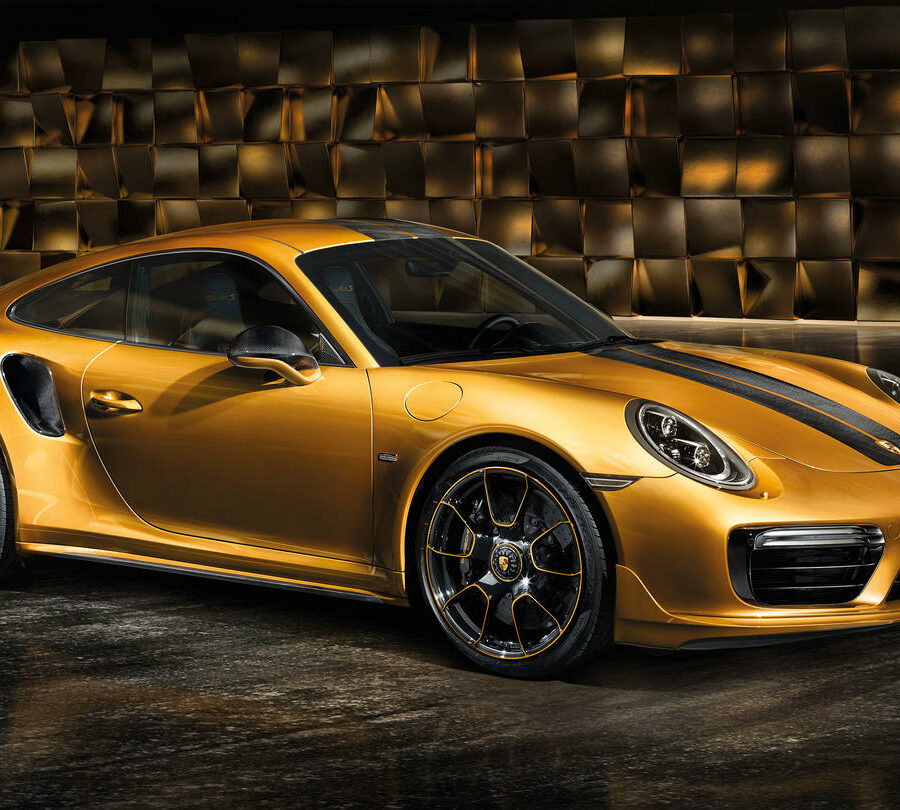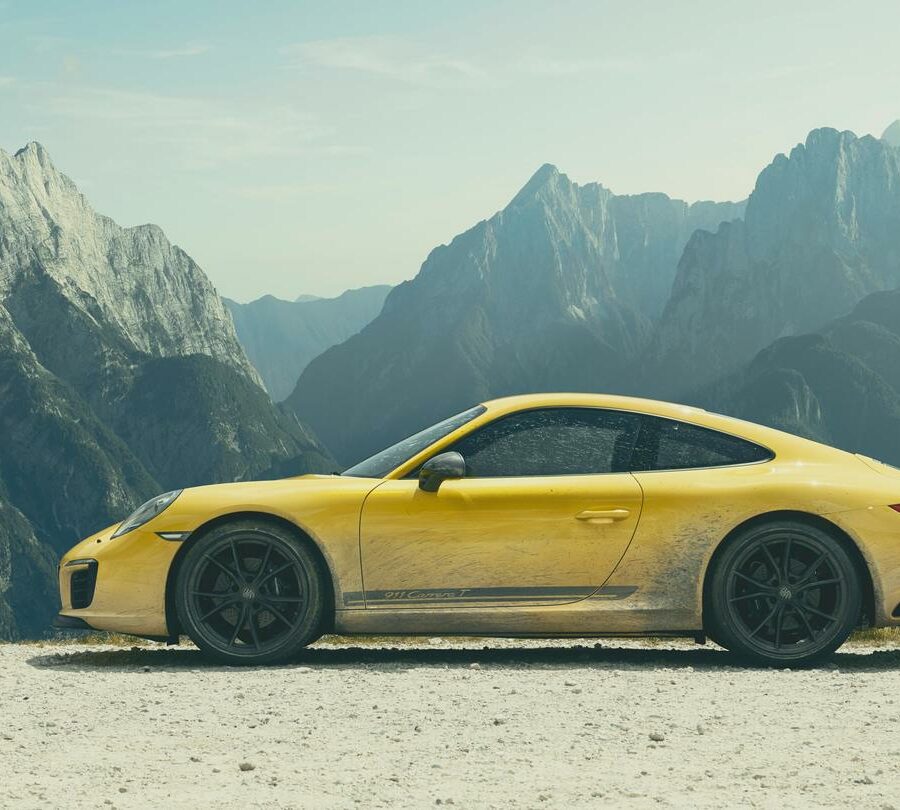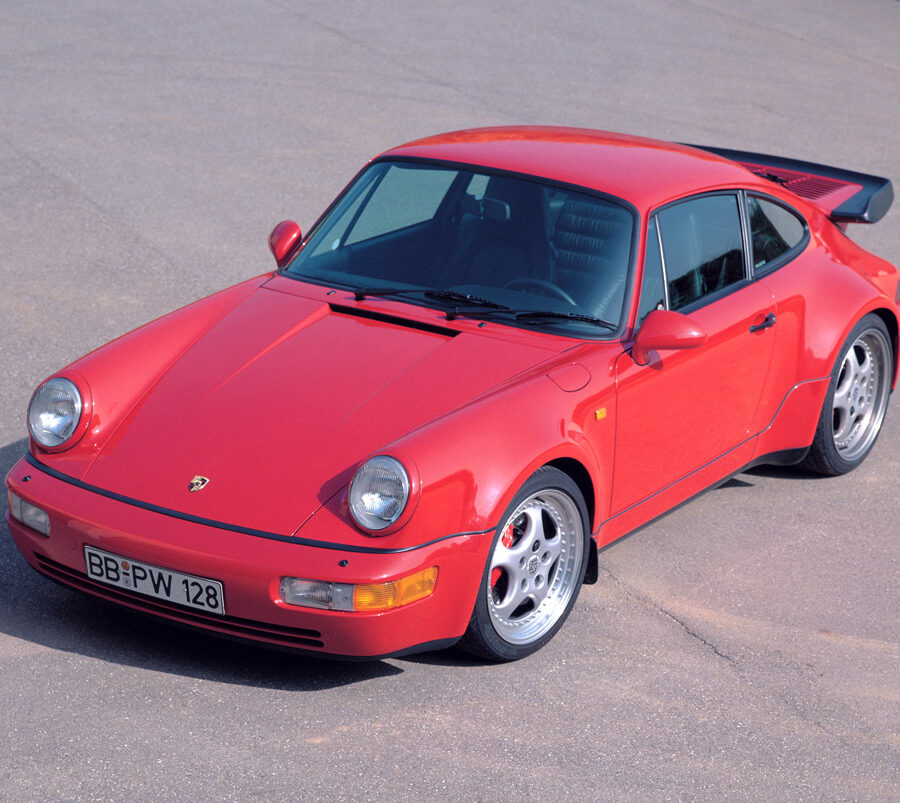Porsche 968 Sport (1994 – 1995)
A UK-only version called "968 Sport", was offered in 1994 and 1995, and was essentially a Club Sport model
Porsche 944 S2 SE (1992)
Limited series built following the excitement around a prototype 'Sport Equipment' version of the Type 944 S2.
Porsche 944 S2 Cabriolet (1989 – 1991)
The S2 was also available as a cabriolet, a first for the 944 line.
Porsche 944 S2 Coupe (1989 – 1991)
In 1989 the S2 upped the performance with its 3.0 liter four cylinder engine, producing 208 hp.
Porsche 944 S Coupe (1987 – 1988)
In 1987 Porsche debuted the 944 S, with a higher performance version of the naturally aspirated four cylinder engine.
Porsche 944 Celebration Edition (1988)
The Porsche 944 Celebration Edition was a special edition of the 944 base model produced to commemorate the 100,000th 944 built in Neckarsulm, Germany
Porsche 911 Targa 4 GTS (992) (2022 – Present)
The most capable "poser" car we have ever seen or driven. What more could you want?
Porsche 911 Carrera 4 GTS Cabriolet (992)
Think Turbo lite with the odd GT3 flourish thrown in.
Porsche 911 Carrera 4 GTS Coupe (992)
What's not to like about a convertible 911 with 473 bhp and lots of other goodies as standard
Porsche 911 Carrera GTS Cabriolet (992) (2022 – Present)
Twin-turbo 3.0-liter flat-six and open-top fun
Porsche 911 Carrera GTS Coupe (992) (2022 – Present)
More hardcore options that bring more engagement for the 992 generation. The coupe is still the one to get.
Porsche 597
The Porsche 597 "Jagdwagen". The Floating Porsche.
Buchmann-Porsche 928 Targa
The one we wish they made
Porsche 928 Koenig
The King of '80s Conversions Focuses on the 928
Porsche 928 S4 Bonneville Special
The Record Breaker
Porsche 928 All-aluminium Special
Porsche's All Aluminum 928S Racer
Porsche 928 Long Wheelbase Specials
In collaboration with tuning company AMG
Porsche 918 Spyder
Simply stated, the Porsche 918 Spyder was a special hypercar. A mid-engined, plug-in hybrid masterpiece
Porsche 911 3.2 Speedster (1989)
The Last Air Cooled 911 To Get RS Initials
Porsche 911 Turbo 3.6 S (964) (1994)
'36S' package included body kit and mighty X88 'S' motor. 19 non 'slant nose' or Package cars were made for USA.
Porsche 911 GT3 Touring (992) (2022 – Present)
Sensational. Rewarding. Engaging. Intense. It Doesn't Get Any Better Than This
Porsche 911 GT3 (992) (2022 – Present)
The best sports car on the planet. No exceptions needed.
Porsche 911 Targa 4S Heritage Design Edition (992) (2021)
Historical exterior and interior design elements in this special edition Targa 4S
Porsche 911 GT3 R (991.2) (2019 – 2020)
Sits between the GT3 Cup and the RSR. Updated for 2019 season.
Porsche 911 RSR 4.2 (991.2) (2019 – 2021)
Brand-new 911 RSR built to defend the FIA World Endurance Championship (WEC) title.
Porsche 911 Turbo S “Edition 918 Spyder” (997.2) (2012)
Inspired by the 918 Spyder
Porsche 911 Turbo S 10 Year Anniversary Edition (997.2) (2011)
Limited edition model to celebrate an active decade in the Chinese market
Porsche 942
A Special Edition 928 Offered As A Gift to Ferry Porsche on his 75th Birthday
Porsche 911 Targa 4S (992) (2021 – Present)
Crazy. Sexy. Cool. Fast.
Porsche 911 Targa 4 (992) (2021 – Present)
The sexiest 911 gets its 992 makeover
Porsche 911 Turbo 3.6 (964) (1993 – 1994)
Engine based on modified 3.6 litre 964 unit. Speedline wheels with big red brake calipers.
Porsche Boxster GTS (2015 – 2016)
More than the extra power, it’s the standard performance goodies that make the GTS more compelling than the S.
Porsche 911 Carrera GTS Cabriolet (997) (2011 – 2012)
The Sweetest Open Top 911 In the 997 Era
Porsche 911 Turbo Cabriolet (992) (2021 – Present)
All-wheel drive. Cabriolet Body. Supercar Performance. What's Not to Like.
Porsche 911 Turbo Coupe (992) (2021 – Present)
You know the world is ok when the "entry level" 911 Turbo hits 0 - 60 mph in just 2.7 seconds.
Porsche 911 Turbo S Cabriolet (992) (2021 – Present)
The Most Powerful Turbo Yet...in a Cabriolet Body. Staggeringly Fast and Capable.
Porsche 911 Turbo S Coupe (992) (2021 – Present)
640 horsepower and 590 b-ft of torque. 0 - 60 mph in 2.6 seconds. Top speed of 205 mph. Yikes.
Porsche Vision E (2019)
A preview of a future electric customer race car from Porsche
Porsche Vision 920 (2019)
A Street-Legal Le Mans Racer Concept
Porsche Vision 918 RS (2019)
Next generation trackday, street-legal Porsche 918 concept
Porsche Macan Vision Safari (2019)
Reminiscent of the legendary 911 Safari, which were used in the 1970s in the East African Safari Rally.
Porsche 551 (2019)
Porsche 551 Spyder vision/concept mock-up (2019)
Porsche Taycan Turbo (2020 – Present)
Porsche Nails The Electric Sports Car On The First Go
Porsche 718 (982) Spyder 4.0 (2019 – Present)
Pound for pound, dollar for dollar, there are no better sports cars on the planet
Porsche Taycan 4S (2020 – Present)
The Perfect Daily Driver?
Porsche Cayman (2009 – 2012)
Four years after the introduction of the Cayman S, Porsche gave us an update.
Porsche 911 Carrera 4 Cabriolet (992) (2020 – Present)
Twin-turbo flat-six, all-wheel drive safety and a drop top. NICE!!!
Porsche 911 Carrera 4 Coupe (992) (2020 – Present)
In a nutshell, it’s a base-model 911 Carrera with all-wheel drive
Porsche 911 Speedster (991) (2019)
The Speedster is an absolutely fitting conclusion to the 991-generation.
Porsche Boxster S (2000 – 2002)
In 2000, Porsche gave us the Boxster S, with a 3.2 liter naturally aspirated flat-6 and 250 hp.
Porsche 911 Carrera 4S Cabriolet (992) (2020 – Present)
Top down summertime driving in the current Porsche 911 Carrera 4S Cabriolet is about as good as it gets.
Porsche 911 Carrera 4S Coupe (992) (2020 – Present)
The perfect daily driving sports car with an all-weather, remarkably high-performance envelope
Porsche 718 Cayman GT4 Clubsport (2019 – Present)
The 718 Cayman Race Car
Porsche 911 Speedster Concept (2018)
The 911 Speedster Concept is a road-ready study of an open-top and particularly exciting sports car.
Porsche Mission E Cross Turismo Concept (2018)
Premiere: 2018 March 6 at Geneva motor show
Porsche Sport Tourer Electric (2018)
An Electric Van Concept by Porsche
Porsche 911 Carrera S Cabriolet (992) (2020 – Present)
A car that does it all really well and makes a strong case for itself as the all-round 911 to buy.
Porsche 911 Carrera S Coupe (992) (2020 – Present)
The new Porsche 911 Carrera S: More Powerful, Much Faster, More Digital
Porsche 911 Carrera Cabriolet (992) (2020 – Present)
Porsche says the Cabriolet is just as good to drive as the coupe. They are right.
Porsche 911 Carrera Coupe (992) (2020 – Present)
The base 911 Carrera is larger, faster and probably more than you ever need
Porsche Boxster (2000 – 2002)
The 2.7 L Flat 6 Replaces the 2.5 L Flat 6 To Keep The Boxster Competitive
Porsche 911 GT3 RS (991.2) (2018 – 2019)
6:56.4 minute 'Ring lap time - just 9 seconds behind the GT2 RS, and 1 second faster than the 918 Spyder.
Porsche 718 Cayman GTS (2018 – 2022)
More power, more standard stuff and lots more black treatment = Awesome
Porsche 911 GT2 RS (991) (2018 – 2019)
It is the quickest production car to lap the Nürburgring Nordschleife. It is the most powerful 911 ever made.
Porsche 911 Turbo S Exclusive (991.2) (2018 – 2019)
Exclusive and pricey limited edition 911 Turbo S that nudges past the 600 bhp mark too
Porsche 911 Carrera T (991.2) (2018 – 2019)
The T is basically the ideal sports car
Porsche Cayman S (2009 – 2012)
Four years after the introduction of the Cayman S, the sportier version of the mid-engine sports coupe Porsche was refreshed.
Porsche 911 Turbo S 3.3 (964) (1992 – 1993)
400 lbs lighter than standard Turbo. Power boosted by 61 bhp. RS-spec suspension.
Porsche Boxster (2007 – 2008)
The 2.7 in both the Boxster received VarioCam Plus
Porsche 911 Turbo 3.3 (964) (1991 – 1992)
Revised 964 body, extended arches and 'teatray' wing. 3.3 liter engine a carryover.
Porsche 911 GT1 ’98 Straßenversion (1998)
A single car - the 911 GT1-98 Straßenversion - was built in 1998 to homologate the all-new racing version
Porsche 911 Carrera GTS Coupe (997) (2011 – 2012)
It's faster, more powerful and better looking than any other model in the Carrera family.
Porsche Cayman GT4 (2015 – 2016)
The Perfect Sports Car. The Perfect Porsche.
Porsche 911 Turbo Cabriolet (991.2) (2017 – 2019)
Open top driving has never been this fun...or scarily fast


